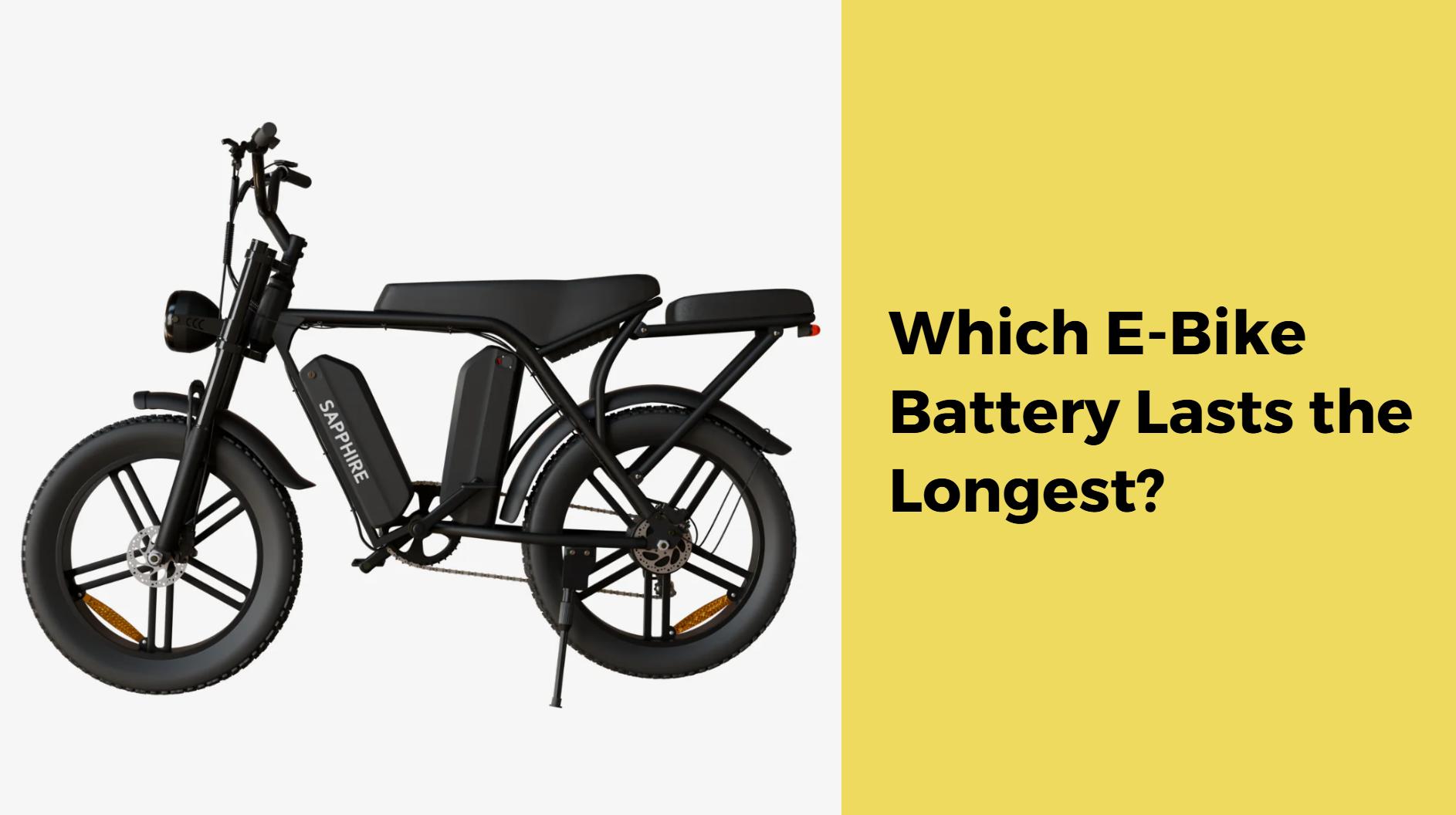
Which E-Bike Battery Lasts the Longest?
The longest-lasting e-bike batteries are typically lithium-ion batteries, which can endure between 500 to 1,000 charge cycles before their capacity significantly diminishes. With proper care, these batteries can last 3 to 5 years. Factors such as usage patterns, charging habits, and environmental conditions play a crucial role in determining their lifespan.
What Types of E-Bike Batteries Are Common?
E-bikes primarily use three types of batteries:
- Lithium-Ion (Li-ion): The most popular choice due to their high energy density, lightweight, and longer lifespan.
- Nickel-Metal Hydride (NiMH): Less common now, these batteries offer moderate performance but are heavier and have shorter lifespans compared to Li-ion.
- Lead-Acid: The oldest technology used in e-bikes, generally found in lower-cost models. They are heavier and have a shorter lifespan.
Battery Type Overview
| Battery Type | Characteristics |
|---|---|
| Lithium-Ion | High energy density, lightweight, long lifespan |
| Nickel-Metal Hydride | Moderate performance, heavier |
| Lead-Acid | Old technology, lower cost, short lifespan |
How Long Do Lithium-Ion Batteries Last?
Lithium-ion batteries typically last between 500 to 1,000 charge cycles, which translates into approximately 3 to 5 years of regular use. This lifespan can vary based on how frequently the battery is charged and discharged, as well as how well it is maintained.Lifespan Comparison Chart
| Battery Type | Average Lifespan (Charge Cycles) | Average Lifespan (Years) |
|---|---|---|
| Lithium-Ion | 500 – 1,000 | 3 – 5 |
| Nickel-Metal Hydride | 300 – 500 | 2 – 4 |
| Lead-Acid | 300 – 500 | 1 – 3 |
What Factors Influence E-Bike Battery Lifespan?
Several factors can significantly impact the lifespan of e-bike batteries:
- Charging Habits: Regularly charging to full and discharging completely can shorten battery life. Ideally, keep the charge between 20% and 80%.
- Temperature: Extreme temperatures can affect battery performance and longevity. Storing and using batteries in moderate conditions is essential.
- Load and Usage Patterns: Heavier loads and frequent uphill riding require more power, which can stress the battery.
Factors Influencing Lifespan
| Factor | Impact on Lifespan |
|---|---|
| Charging Habits | Overcharging or deep discharging reduces life |
| Temperature | Extreme conditions accelerate degradation |
| Load and Usage Patterns | Increased power demands shorten lifespan |
How Do Different E-Bike Battery Types Compare?
When comparing e-bike battery types:
- Lithium-Ion: Offers the best performance with high energy density and longevity.
- Nickel-Metal Hydride: Provides decent performance but is heavier and less efficient than lithium-ion.
- Lead-Acid: While cheaper upfront, they have the shortest lifespan and are less efficient.
Comparison Chart
| Feature | Lithium-Ion | Nickel-Metal Hydride | Lead-Acid |
|---|---|---|---|
| Energy Density | High | Moderate | Low |
| Weight | Lightweight | Heavier | Heaviest |
| Lifespan | 3 – 5 years | 2 – 4 years | 1 – 3 years |
What Is the Average Lifespan of E-Bike Batteries?
The average lifespan of e-bike batteries varies by type:
- Lithium-Ion: Typically lasts 3 to 5 years or up to 1,000 charge cycles.
- Nickel-Metal Hydride: Generally lasts about 2 to 4 years or around 300 to 500 charge cycles.
- Lead-Acid: Usually lasts about 1 to 3 years, with a maximum of about 300 to 500 charge cycles.
Average Lifespan Overview
| Battery Type | Average Lifespan (Years) | Charge Cycles |
|---|---|---|
| Lithium-Ion | 3 – 5 | Up to 1,000 |
| Nickel-Metal Hydride | 2 – 4 | Up to 500 |
| Lead-Acid | 1 – 3 | Up to 500 |
How Can You Extend the Life of Your E-Bike Battery?
To maximize your e-bike battery’s lifespan:
- Charge Smartly: Avoid fully discharging or overcharging your battery; aim for a charge level between 20% and 80%.
- Store Properly: Keep your battery in a cool, dry place away from extreme temperatures when not in use.
- Regular Maintenance: Clean terminals and check for any wear or damage periodically.
Battery Care Tips
| Tip | Description |
|---|---|
| Charge Smartly | Maintain charge levels between 20% and 80% |
| Store Properly | Keep in a cool, dry environment |
| Regular Maintenance | Inspect for wear and clean terminals regularly |
Industrial News
The e-bike industry continues to grow rapidly, with advancements in battery technology leading to longer-lasting lithium-ion options. Recent developments focus on improving energy density and reducing charging times while enhancing safety features. As consumer demand for electric bikes increases, manufacturers are investing in research to develop more efficient battery solutions that extend overall lifespan and performance.
Lithium Battery Manufacturer Insights
“Understanding how to care for lithium-ion batteries is crucial for maximizing their lifespan,” stated an expert from a leading battery manufacturer. “By educating users on proper charging habits and storage conditions, we can ensure that our products deliver reliable performance over many years.”
FAQ Section
Q: Which type of e-bike battery lasts the longest?
A: Lithium-ion batteries typically last the longest among e-bike batteries, with an average lifespan of about 3 to 5 years or up to 1,000 charge cycles.Q: How can I extend my e-bike battery’s life?
A: To extend your battery’s life, maintain a charge level between 20% and 80%, store it properly in cool conditions, and perform regular maintenance checks.Q: What factors influence the lifespan of an e-bike battery?
A: Key factors include charging habits, temperature extremes, load during rides, and overall usage patterns.Q: Are there significant differences between lithium-ion and lead-acid batteries?
A: Yes, lithium-ion batteries offer longer lifespans (3-5 years) and higher efficiency compared to lead-acid batteries (1-3 years), which are heavier and less efficient.
Know more:
Are All E-Bike Batteries the Same?
How Do I Know If My Ebike Battery Is Good?
How to Choose the Right Bike Battery for Your Electric Bicycle
Which E-Bike Battery Lasts the Longest?
